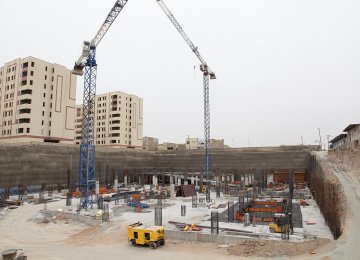In the current Iranian year (March 2016-17) the Iranian government has allocated over $16 billion to implement construction projects across the country, according to Mohammad Baqher Nobakht, the government’s spokesman.
This is $2.5 billion more than last year’s construction budget.
Last year’s shortage resulted in abandoning nearly 3,000 projects and a significant drop in domestic demand for construction materials, including steel products, with the consequent decrease in prices, Metal Expert, a Ukraine-based provider of news and analysis on steel products and steelmaking raw materials industries, wrote in a recent report dubbed “Iran in Focus”.
Market insiders are, however, quite optimistic about construction sector development this year.
“Many projects are set to be launched, especially those related to domestic industrial infrastructure. The development of the country’s ports, airports and railroads will generate considerable demand for steel products this year,” said Reza Zaer-Heydari, a steel industry expert and market analyst.
Under the circumstances, some market participants expect to see apparent longs consumption to rise from 8-9 million to 10-11 million tons.
Nevertheless, there is one serious obstacle to the recovery of local longs producers–overcapacity that continues to grow.
According to Metal Expert’s data, Iran’s total nominal longs-rolling capacity is around 23 million tons. Of this figure, 40% are represented by rebar, 58% by merchant bars and sections, and only 2% by wire rod.
In 2016-17, 7.2 million tons are planned to be added, which may tighten competition in the local market and influence capacity utilization rate and prices.
Local mills are currently underutilized, the majority being used at less than 50%, while some are idled. If demand improves, the mills having own billets as well as large re-rollers will enjoy the greatest potential. The capacity of such mills is estimated at around 10 million tons.
The government is trying to protect local producers from the pressure of foreign material by increasing import duties. In particular, this Iranian year, import duty for long products has been increased by 6% to 26%. Moreover, large mills like Esfahan Steel Company will reallocate part of their tonnages to export outlets to clear the way for smaller producers in the domestic market. This, however, may not be enough to reveal their potential.





